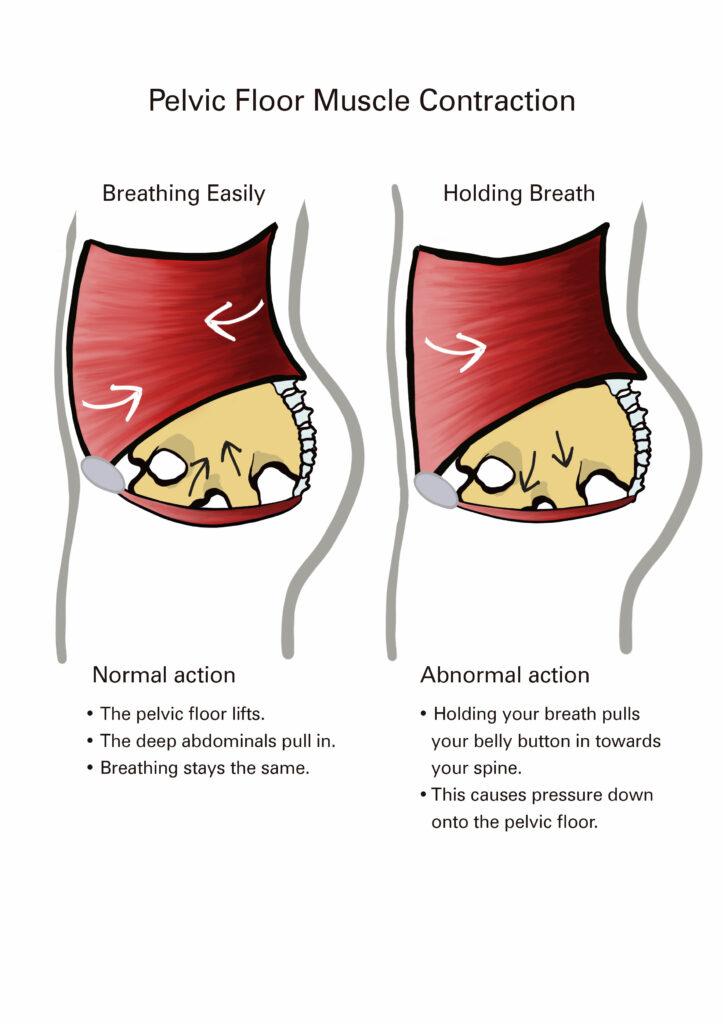‘It is estimated that around 7 million people in the UK have urinary incontinence (5-10% of the population).’ https://www.incontinence.co.uk
Your pelvic floor is a sling of muscles that attaches to the bottom of your pelvis, supporting your pelvic organs and giving you control over your bladder and bowels. It is as important for men as for women, but often it is only mentioned or thought about after childbirth.
There are two main types of urinary incontinence – stress or urge, with some people suffering from both. The causes and treatment are the same for each type in most cases and men can be affected as well as women.
Stress incontinence is when the pelvic floor is unable to prevent urine from leaking when put under pressure. This may be when you cough, sneeze or exercise.
Urge incontinence is the inability to stop urine flow when your bladder feels that it is full, sometimes called an overactive bladder. It is why some people will always go to the bathroom ‘just in case’ and will normally be very aware of when the next opportunity to go will be.
Urinary incontinence is normally blamed on a weak pelvic floor and sufferers are given exercises to strengthen it. This approach would be effective if that was the only reason, but remember that your pelvic floor is connected to the rest of your body, and it doesn’t work in isolation. So if you have a history that includes back pain, pelvic rotation, childbirth, surgery or trauma (particularly in the abdominal or pelvic area) or pelvic organ prolapse, it is highly likely that they are contributing to the weakness.
Finding and treating the cause will be much more successful than doing exercises alone to try and overcome the problem. Once your pelvic floor is no longer tight and twisted because of strain from other areas of your body, the exercises will be much more effective.
What to do about it
Tell your doctor: So many people are embarrassed by this problem that they don’t talk about it to their doctor or even friends and family. This has created a taboo which perpetuates the problem. In the first instance it is important for your doctor to rule out any conditions which may need medical intervention. Generally, the sooner problems are investigated and treated, the quicker and more successful the treatment.
There is world-wide controversy at the moment surrounding the use of vaginal mesh implants to treat incontinence. There are many women who have reported ill-effects from the plastic polypropylene that is used and as I write there are law-suits in progress. This is a rapidly changing area as the investigations progress, so I would advise you to look into the most recent developments for yourself if you are considering this operation.
Get treatment: Find a therapist who is qualified in treating incontinence by looking at your whole body and finding the cause. They will then be able to advise you on when and how to do the pelvic floor exercises. Ideally see someone who is qualified in assessing and treating your pelvic alignment; if the bones of your pelvis that the pelvic floor muscles are attached to are rotated, then it follows that your pelvic floor will also be twisted.
Pelvic floor exercises: Most women who have had children will have heard of Kegel exercises, but they apply to men too. These pelvic floor exercises were devised by Dr Arnold Kegel, an American gynaecologist in the 1940’s.

Begin with an empty bladder and slowly contract your pelvic floor from the back to the front of your body, as if you are trying to stop yourself from passing urine. Then hold the contraction for a count of ten (you might need to build up to being able to maintain the contraction for that long) and slowly release the muscles until they are fully relaxed. Keep your breathing slow and gentle so that you do not hold your breath. But do not perform this exercise while you are passing urine as it can lead to incomplete bladder emptying and an increased risk of urinary infection.
Keep drinking: Although it may seem counter-intuitive, it is very important to drink plenty of water to keep your bladder healthy. Limiting your fluid intake will increase the risk of infection and of bladder irritability. Sipping water throughout the day is a better way of keeping your body hydrated than gulping down lots in one go and is less likely to put strain on your bladder if it is weak.